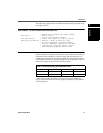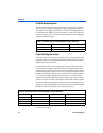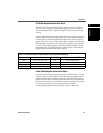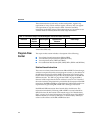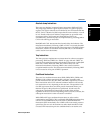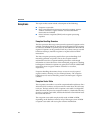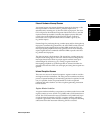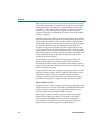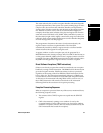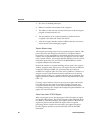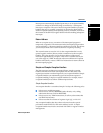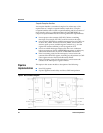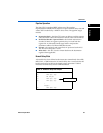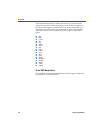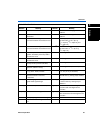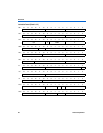
Altera Corporation 19
GettingOverview
Overview
1
The action taken by the overflow exception handler subroutine depends
upon the requirements of the system. For systems running larger or more
complex code, the overflow and underflow handlers can implement a
virtual register file that extends beyond the limits of the physical register
file. When an overflow occurs, such an overflow handler might (for
example) reload the entire contents of the physical register file from the
stack and restart CWP back at LO_LIMIT. Many embedded systems, on
the other hand, might wish to tightly control stack usage and subroutine
call depth. Such systems might implement an overflow handler that prints
an error message and exits the program.
The programmer determines the nature of and actions taken by the
register window overflow exception handler. The Nios SDK
automatically installs by default a register window overflow handler
which virtualizes the register file using the stack.
A register window overflow exception can only be generated by a
RESTORE instruction. Directly writing CWP (via a WRCTL instruction) to
a value greater than HI_LIMIT will not cause a register window overflow
exception. Executing a RESTORE instruction when CWP is already above
HI_LIMIT will not generate a register window overflow exception.
Direct Software Exceptions (TRAP Instructions)
Software can directly request that control be transferred to an exception
handler by issuing a TRAP instruction. The IMM6 field of the instruction
gives the exception number. TRAP instructions are always processed,
regardless of the setting of the IE or IPRI bits. TRAP instructions do not
have a delay slot. The instruction immediately following a TRAP is not
executed before control is transferred to the indicated exception-handler.
A reference to the instruction following TRAP will be saved in %o7, so
that a TRET instruction will transfer control back to the instruction
following TRAP at the conclusion of exception processing.
Exception Processing Sequence
When an exception is processed from any of the sources mentioned above,
the following sequence occurs:
1. The contents of the STATUS register are copied into the ISTATUS
register.
2. CWP is decremented, opening a new window for use by the
exception-handler routine (This is not the case for register window
underflow exceptions, where CWP was already decremented by the
SAVE instruction that caused the exception).



